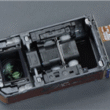Taco Bell Rethinks AI Implementation at Drive-Thru Locations Amid Surprising Feedback
On August 29, Taco Bell, known for its innovative fast food offerings, announced a reassessment of its artificial intelligence (AI) utilization at drive-thru locations across the United States. This decision comes in light of widespread criticism fueled by amusing yet concerning technological glitches.
The Rise of AI in Fast Food
In 2023, Taco Bell introduced voice AI systems at over 500 U.S. restaurants, aiming to reduce human errors and enhance efficiency. However, a series of challenges have led the company to reconsider its approach. Chief Digital and Technology Officer Dane Mathews remarked on the duality of the technology’s performance: “Sometimes it disappoints me, but sometimes it surprises me.”
The intent was to streamline order processes, but the unintended consequences have raised questions about the reliability of AI in fast-paced environments.
Customer Frustrations and Viral Moments
Customer reactions have been vocal, especially on social media, where complaints have gained significant traction. One video, which amassed over 21.5 million views on Instagram, highlighted a humorous and frustrating interaction where a customer requested a "big cup of waves," only for the AI to respond with, “What drink do you want to serve?” Such moments have become catalysts for discussions surrounding AI effectiveness in real-world applications.
A particularly notorious incident involved a customer who attempted to overwhelm the system by ordering 18,000 cups of water, further demonstrating the vulnerabilities of AI systems in high-pressure scenarios.
Balancing Human and AI Interaction
Mathews acknowledged the importance of human involvement during peak times, stating, “Human employees are more suitable for taking orders than AI.” He emphasized the need for the restaurant team to discern when it is appropriate to use voice AI and when human intervention is essential. This hybrid approach could ensure better customer service and a more reliable ordering process.
As Taco Bell moves forward, the company plans to apply lessons learned from these experiences. The evaluation of AI usage scenarios will become more rigorous, and a focus on the speed of service may not always be prioritized.
Lessons from the Industry
Taco Bell’s considerations are not unique. Other fast-food giants like McDonald’s have faced similar fates. Last year, the company dismantled its drive-thru AI ordering system after receiving numerous complaints about glaring errors. Discrepancies included inexplicable additions of bacon to ice cream orders and customers inadvertently racking up hundreds of dollars in chicken nugget charges.
These incidents underscore the dangers of over-reliance on technology in fast-paced settings. As more restaurants experiment with AI-driven systems, the need for a balanced approach that combines technology with human oversight becomes increasingly evident.
The Future of AI in Fast Food
The challenges Taco Bell and others face reveal critical insights into the implementation of AI in the service industry. While AI offers significant potential to enhance operational efficiency, its deployment must be strategically managed. As the industry evolves, a focus on unique customer experiences alongside the integration of technology will shape the future of fast-food service.
As Taco Bell continues to navigate this landscape, one thing is clear: the collective feedback from customers and staff will play a pivotal role in refining the use of AI. The journey toward an improved drive-thru experience is ongoing, as restaurants strive to find the right balance between innovation and customer satisfaction.
In conclusion, while the integration of AI in fast food presents exciting possibilities, the lessons learned from Taco Bell’s experience emphasize the necessity of careful consideration and adaptive strategies moving forward. Embracing technology, while valuing human touch, may ultimately define the future of drive-thru services.






